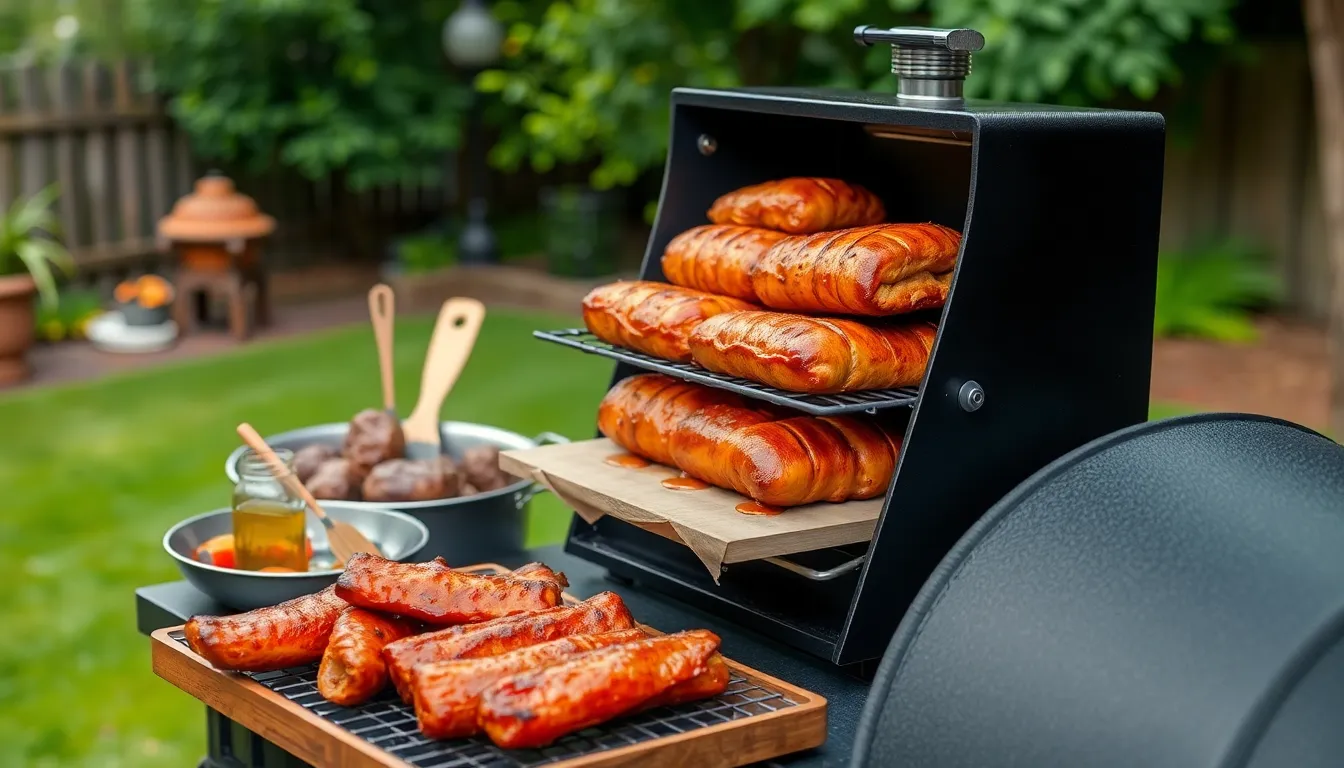How to Create a Smoking Station in Your Backyard
I. Introduction
The rising popularity of outdoor smoking stations is a testament to the growing passion for barbecuing and grilling. Backyard smoking stations are no longer just a trend; they have become a staple for food enthusiasts who appreciate the rich flavors and tenderness that smoking brings to meats and other foods.
A smoking station is a dedicated outdoor area equipped with the necessary tools and equipment for smoking food. Unlike casual grilling, smoking involves cooking food at low temperatures over a longer period of time, which results in unique flavors and textures.
Having a dedicated space for smoking meats and other foods not only enhances the cooking experience but also maximizes efficiency, safety, and enjoyment. In this post, we will guide you through the process of creating your very own smoking station in your backyard.
II. Choosing the Right Location
Choosing the right location for your smoking station is crucial for both convenience and safety. Here are some factors to consider:
A. Factors to consider when selecting the location
- Proximity to the house: Ensure that the smoking station is close enough to the house for easy access to food preparation and storage, but far enough to prevent smoke from entering your home.
- Wind direction: Consider the prevailing wind direction. You want to position your station so that smoke blows away from your home and any outdoor gatherings.
- Safety considerations: Avoid placing your smoking station under overhanging branches, near flammable structures, or in areas prone to high foot traffic.
B. Suggested areas in the backyard to avoid
- Near wooden decks or patios
- Close to fences or walls that may trap smoke
- In shaded areas where smoke may linger
III. Essential Equipment for Your Smoking Station
To create an efficient smoking station, having the right equipment is essential. Here’s a breakdown of what you need:
A. Types of Smokers
Choosing the right smoker is key to achieving the desired flavor and cooking experience. Here are four popular types:
- Electric: Easy to use with a consistent temperature, perfect for beginners.
- Charcoal: Offers great flavor and is affordable, but requires more skill to manage.
- Wood: Provides an authentic flavor and is versatile for various types of wood; however, it can be tricky to control the temperature.
- Pellet: Convenient with an automatic feed system but can be more expensive and less traditional.
B. Accessories Needed
Beyond the smoker, you’ll need several essential accessories:
- Thermometer: A reliable thermometer ensures that your meats are cooked to the proper temperature.
- Smoking wood chips: Choose different wood types for varying flavors (e.g., hickory, mesquite, applewood).
- Water pan: Helps maintain moisture and prevents the meat from drying out during the smoking process.
C. Optional Items for Convenience
For a more enjoyable cooking experience, consider adding these optional items:
- Prep table: A dedicated surface for preparing food before and after smoking.
- Storage for spices and sauces: Keep your favorite seasonings and sauces within arm’s reach for easy access while cooking.
Comparison of Smoker Types
| Type of Smoker | Pros | Cons |
|---|---|---|
| Electric | Easier to use, consistent temperature | Less flavor complexity |
| Charcoal | Great flavor, affordable | Requires more skill, longer setup |
| Wood | Authentic flavor, versatile | Can be difficult to control temperature |
| Pellet | Convenient, automatic feed | More expensive, less traditional |
IV. Building Your Smoking Station
Once you’ve chosen the location and gathered your equipment, it’s time to build your smoking station. Here’s how to get started:
A. Materials Needed
- Foundation: Use pavers or concrete to create a stable surface for your smoker.
- Fencing or walls: Consider adding a barrier for protection from wind or stray sparks.
B. Step-by-Step Guide to Building the Station
- Preparing the ground: Clear the area of debris and ensure that the ground is level.
- Installing the smoker: Position your smoker on the foundation, ensuring it’s stable and secure.
- Adding accessories and storage solutions: Set up your prep table, storage for spices, and any other accessories to create a functional workspace.
V. Safety Tips for Your Smoking Station
Ensuring safety while using your smoking station is paramount. Here are some tips to keep in mind:
A. Fire Safety Precautions
- Keep a fire extinguisher nearby.
- Never leave the smoker unattended while in use.
- Use heat-resistant gloves when handling hot equipment.
B. Proper Ventilation
Ensure that your smoking station is well-ventilated to avoid smoke buildup, which can be harmful. Avoid enclosed spaces.
C. Keeping the Area Clean and Organized
Regularly clean your smoking station and keep the area organized to prevent accidents and ensure a pleasant cooking experience.
VI. Maintenance of Your Smoking Station
To prolong the life of your smoking station and ensure the best cooking results, regular maintenance is essential. Here’s how to keep everything in top shape:
A. Regular cleaning of the smoker
After each use, clean your smoker thoroughly, including the grates, water pan, and any grease buildup.
B. Seasonal checks and preparations
Before the smoking season begins, check all equipment for wear and tear. Ensure that your smoker is in good working order.
C. Storing accessories properly
Keep your accessories organized and protected from the elements to ensure they last. Consider using waterproof containers or cabinets.
VII. Conclusion
In conclusion, creating a smoking station in your backyard is a rewarding project that enhances your outdoor cooking experience. With the right location, equipment, and safety measures, you can enjoy delicious smoked meats and other foods all year round. So gather your materials, roll up your sleeves, and start building the smoking station of your dreams. Happy smoking!




